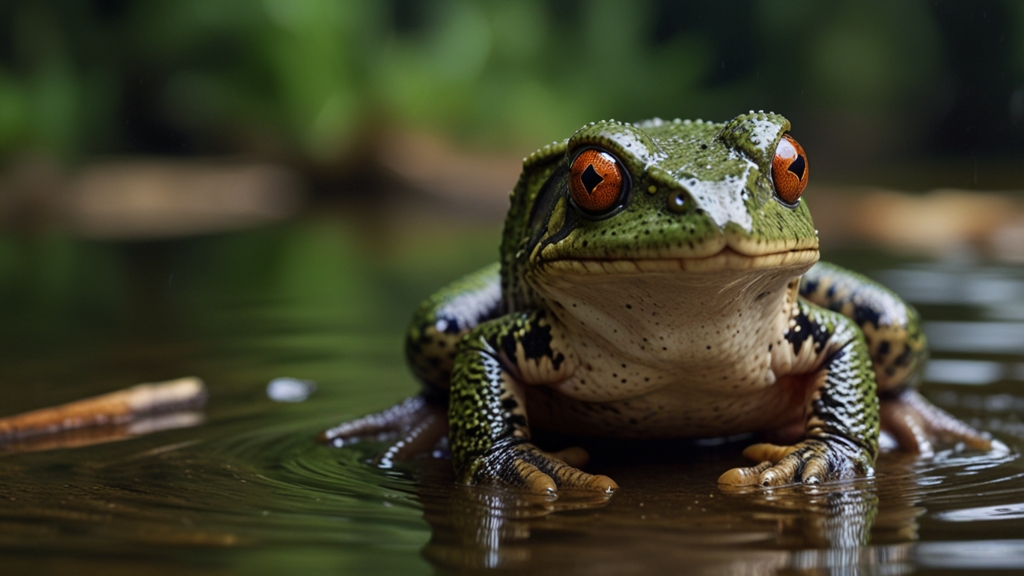Amphibians Under Threat: 10 Shocking Facts That Will Leave You Speechless
Amphibians, a diverse group of cold-blooded vertebrates that include frogs, toads, salamanders, and newts, have been thriving on our planet for over 370 million years. However, their survival is currently under severe threat due to various environmental factors. Here are ten shocking facts about the perilous existence of amphibians in the modern world, each one more startling than the last.
1. Drastic Population Declines
Approximately 40% of amphibian species are currently facing the risk of extinction. This alarming statistic is far higher than for birds, mammals, or reptiles. The rapid decline in amphibian populations is being observed worldwide, signifying a global environmental crisis.
2. Habitat Destruction
Amphibians rely on both terrestrial and aquatic habitats for different stages of their life cycles. The destruction of forests, wetlands, and other natural habitats due to urbanization, agriculture, and industrial activities is drastically reducing their living spaces and breeding grounds.
3. Climate Change Impact
Climate change poses a significant threat to amphibians. Changes in temperature and precipitation patterns can alter habitats and disrupt breeding cycles. For species that are sensitive to temperature fluctuations, even minor climate changes can prove fatal.
4. Pollution and Chemical Contaminants
Amphibians have permeable skin, making them highly susceptible to pollutants and chemicals in their environment. Pesticides, heavy metals, and other contaminants can lead to lethal and sub-lethal effects, including deformities, suppressed immune function, and decreased reproductive success.
5. Chytridiomycosis Epidemic
Chytridiomycosis, caused by the chytrid fungus (Batrachochytrium dendrobatidis), is one of the most devastating diseases affecting amphibians. This infectious disease has been linked to the decline or extinction of over 200 amphibian species worldwide.
“Chytridiomycosis has caused rapid declines in amphibian populations around the world, leading to the extinction of entire species and dramatically altering ecosystems.”—Dr. Karen Lips, University of Maryland
6. Invasive Species
The introduction of non-native species into ecosystems can have severe consequences for local amphibian populations. Invasive predators, competitors, and pathogens can outcompete, prey on, or introduce diseases to indigenous amphibians, leading to population declines.
7. Overexploitation
Amphibians are often harvested for food, traditional medicine, and the pet trade. Overexploitation can rapidly deplete populations, particularly when species already face other environmental pressures.
8. UV Radiation Exposure
Amphibians are highly vulnerable to increased levels of ultraviolet (UV) radiation due to the depletion of the ozone layer. UV radiation can cause skin damage, disrupt development, and increase mortality rates in amphibian eggs and larvae.
9. Fragmentation of Populations
Habitat fragmentation can isolate amphibian populations, making it difficult for individuals to find mates and reproduce. Small, isolated populations are also more susceptible to inbreeding, disease, and extinction due to environmental changes.
10. Loss of Biodiversity
The decline in amphibian populations can have cascading effects on biodiversity and ecosystem health. Amphibians play critical roles in pest control, nutrient cycling, and as indicators of environmental health. The loss of amphibian species can disrupt food webs and lead to the loss of other species.
“The decline of amphibian populations is indicative of broader environmental issues that need urgent attention. Their loss would be a profound tragedy for the planet.”—Dr. Claude Gascon, Amphibian Conservation Specialist
The plight of amphibians is a stark reminder of the broader environmental challenges we face. The need for concerted conservation efforts is more urgent than ever. By raising awareness and taking action, we can help protect these vital, fascinating members of the natural world.










